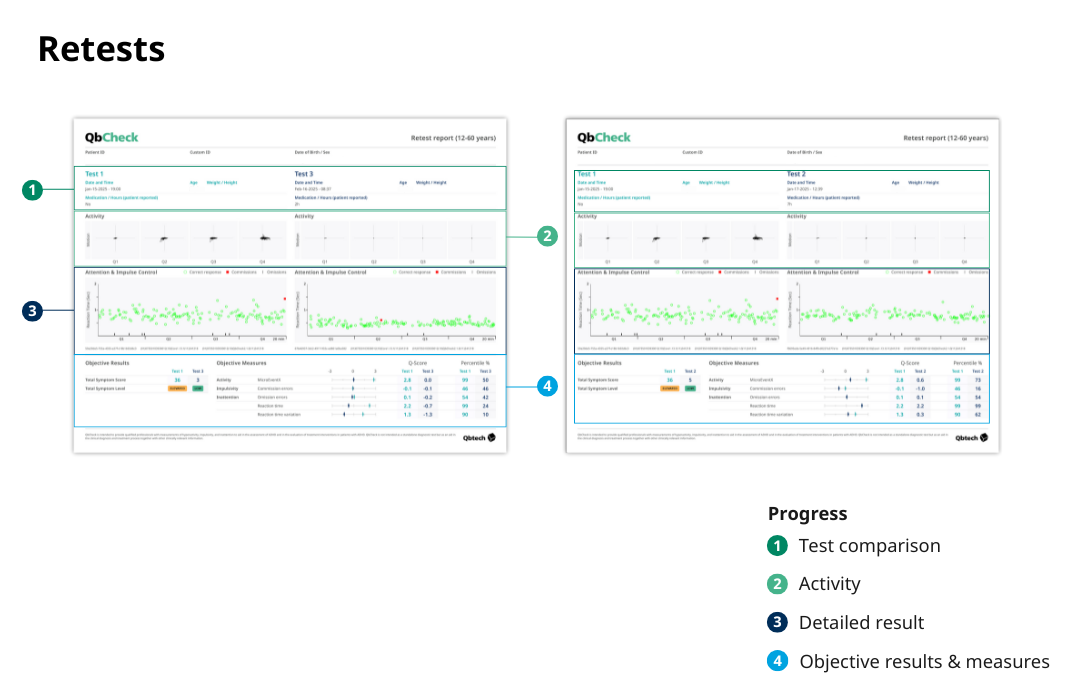Conversations with patients about test results, treatment options, and long-term success are often times pivotal to the success of any ADHD pathway. Patient understanding and engagement directly impact outcomes. Hence, a need for tools that can make complex information easier to digest.
Your ADHD test should be more than just an assessment instrument – it should be a tool that supports psychoeducation, builds trust, and cements the foundations for effective communication. Let’s explore how an ADHD test can do the talking for you.
Using visual ADHD reports to open communication
When explaining ADHD test results, clarity matters. You can establish successful communication when you go from a monologue to a dialogue. Whether you’re taking your patients through their performance, comparing results with the normative data, or explaining symptom presentation, having clear visuals helps showcase information in a way that’s easy to grasp.
Our US clinical advisor, Corina Weir, walks us through the different aspects of a QbCheck report and how you can utilize this tool to support better conversations with your patients, families, and caregivers.
The results from an objective ADHD test like the QbCheck, are presented in clear reports, showing the three core symptom areas, both visually and statistically, making it easier for you to explain and your patient to understand a diagnosis.
Improve ADHD patient engagement with psychoeducation tools
Patients show higher levels of satisfaction with their care when they participate in decisions and have increased knowledge about their condition. You must create an environment where they are comfortable asking questions, engaging with data, and recognizing lived experiences in their results.
There’s no shortage of information about ADHD online. However, much of it is nonspecific and unreliable. Psychoeducation meets patients’ needs by providing them with quality and reliable ADHD information.
What good psychoeducation looks like
✅ Tailored to the patient’s age, gender, and information needs
✅ Uses relatable and easy-to-understand language
✅ Grounded in medical understanding of ADHD
✅ Is positive and supportive – with practical advice to help patients
Communication and ADHD treatment optimization
Patients with ADHD may struggle with articulating their experiences, emotions, and challenges. Visual cues help them process information quicker than usual and remember important details clearly. By improving your conversation quality, objective tests like the QbCheck help you build that relationship better. Your patients not only see how they’re being treated, but also why certain treatment options are recommended.
After a diagnosis, having easy-to-interpret reports on hand helps treatment optimization and medication management. You can make use of our clinical support calls to identify minute changes in patients’ symptoms. This goes a long way in medication management. You will be able to assess if a patient's dosage of medication needs to be changed, as well as compare the effects of two or more medications. Patients can also find great benefit in this, as they can now make informed decisions about their care.
The report below shows patient results off medication compared to on optimized dose. Such retest reports can be useful so patients and families can visually see the difference treatment might be making.
Effective ADHD care begins with effective communication
When patients understand their diagnosis, they’re more likely to engage, follow, and trust your process. With the right tools, technology, and strategies, your clinic can achieve long-term success
Our psychoeducation toolkit is designed to help clinicians like you better explain ADHD to patients, families, and caregivers. Fill the form below to download it for free.


